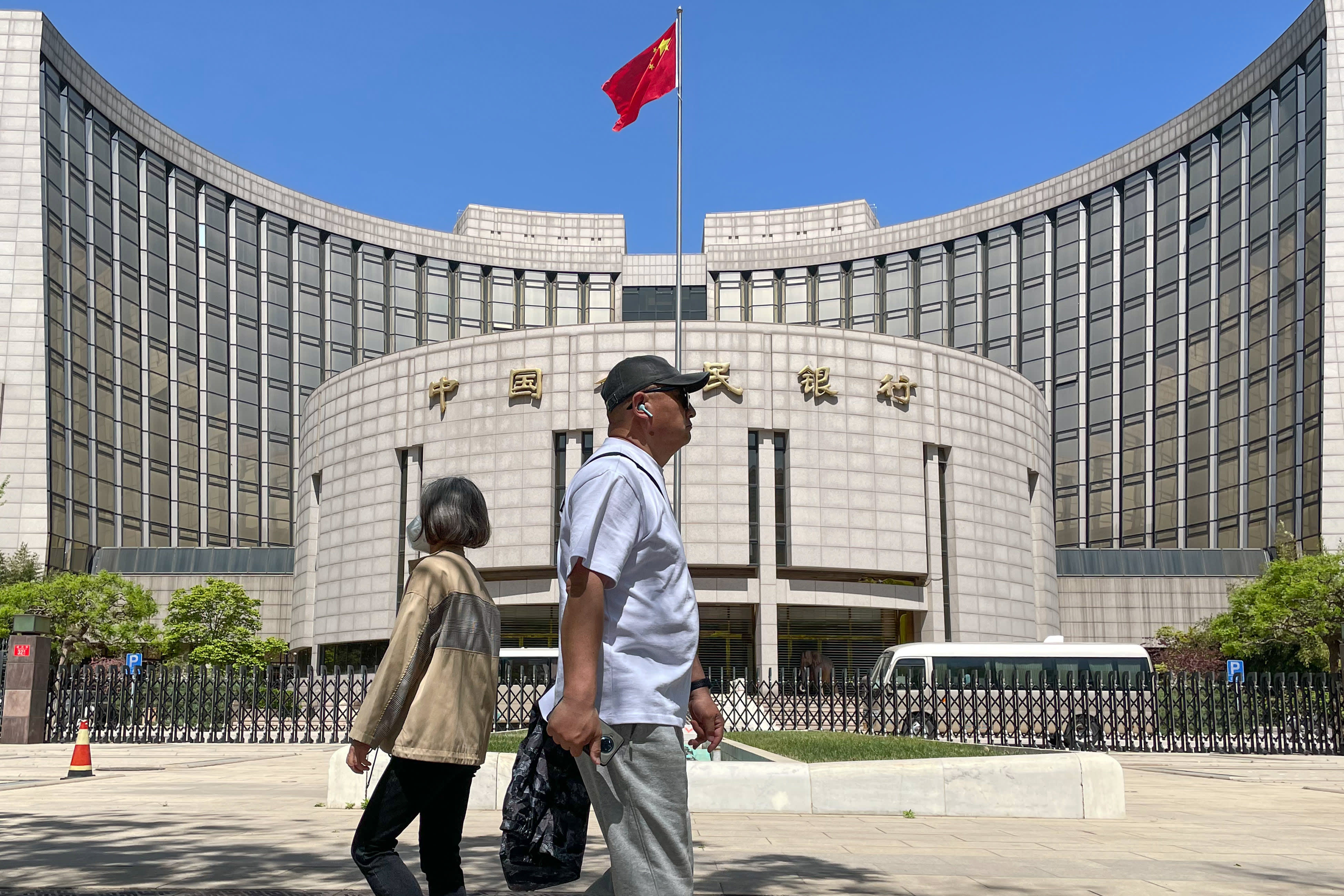The People’s Bank of China (PBOC) building in Beijing, China, on Tuesday, April 18, 2023. China’s economy grew at its fastest pace in a year in the first quarter, putting Beijing on track to meet this year’s growth target without adding much stimulus, while also helping to protect The global economy from contraction. Source: Bloomberg
bloomberg | bloomberg | Getty Images
China’s consumer price index rose 0.1% in April on a yearly basis, the slowest since early 2021. Prices fell on a monthly basis by 0.1%.
Economists polled by Reuters had expected consumer prices to rise 0.4% from a year ago and remain unchanged from the previous month.
The April reading comes after China’s inflation rate eased to 0.7% in March after hitting a recent high of 2.8% in September.
Inflation in China was led by food and services, according to the National Bureau of Statistics — food prices rose 0.4%, and services prices rose 1% from a year ago. Meanwhile, consumer prices fell 0.4%.
The Chinese onshore yuan weakened 0.04% to 6.9428 against the US dollar shortly after the release.
China’s producer price index, which measures prices paid by wholesalers, fell 3.6%. Economists polled by Reuters had expected it to see a 3.2% decline year-on-year after falling 2.5% the previous month.
This is a stark contrast to the latest US inflation data overnight which showed consumer prices rose 4.9% in April – tumbling in the wake of the Federal Reserve’s efforts to tame inflation by raising interest rates 10 times in a row.
Inflation has eased considerably in China after it reopened, Helen Qiao, chief China economist at Bank of America, wrote in a note Tuesday, prompting market watchers to wonder if the world’s second-largest economy is heading for deflation.
It seems that when major central banks find it difficult to tame the inflation monster, [People’s Bank of China] It would have ranked high on the inflation control scorecard.”
Qiao added that China managed to keep its CPI inflation rate at an average of 1.8%, which is close to the lowest reading of the 3-year average since 2003.
Now, core CPI inflation in China is already well below Japanese levels, Bank of America economists note.
Although it has not reached deflationary levels, China’s low inflation rate is likely driven by insufficient demand.
“Although households have already seen marked pent-up demand from tourism during recent holidays, they remain cautious about commodity spending, especially for large items (white goods, cars, etc.),” Qiao wrote in the note.
“A weak labor market as well as a slower recovery in the real estate market continued to weigh on consumer sentiment,” it wrote.
— CNBC’s Lim Hui Ji contributed to this report
This is breaking news. . Please check back for updates

“Typical beer advocate. Future teen idol. Unapologetic tv practitioner. Music trailblazer.”







More Stories
JPMorgan expects the Fed to cut its benchmark interest rate by 100 basis points this year
NVDA Shares Drop After Earnings Beat Estimates
Shares of AI chip giant Nvidia fall despite record $30 billion in sales